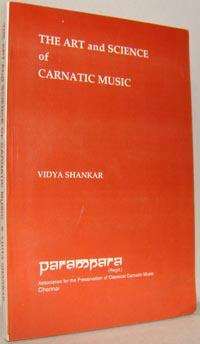

Publisher = The Indian Music Publishing House


Many of the modes used in ancient Tamil music (known as " Pann"s) are entirely equivalent to the ragas used in the melakarta raga system of today's Carnatic music. While it is not clear whether ancient Tamil music has evolved into the tradition of Carnatic music, the unique similarities shared by both styles of music through history has been undisputed. The Natya Shastra mentions many musical concepts (including " swara" and " tala") that continue to be relevant to Carnatic music today. cite web|url=|title= Carnatic Music|work=Swaralaya|publisher=Carnatic music organization, Tampa Bay, Florida|accessdate=]. The " Yajnavalkya Smriti" mentions "vīṇāvādanatattvajñaḥ śrutijātiviśāradaḥ tālajñaścāprayāsena mokṣamārgaṃ niyacchati" ("The one who is well versed in veena, one who has the knowledge of srutis and one who is adept in tala, attains salvation without doubt.") Carnatic music is based on music concepts mentioned in Bharata's "Natya Shastra". References to Indian classical music are made in many ancient religious texts, including epics like the Ramayana and Mahabharata. Fact|date=June 2008 The Yajur-Veda, which mainly consists of sacrificial formulae, mentions the " veena" as an accompaniment to vocal recitations during the sacrifices. The Sama Veda is said to have laid the foundation for Indian music, and consists mainly of hymns of Rigveda, set to musical tunes which would be sung using three to seven musical notes during Vedic sacrifices. The Vedas are generally accepted as the main probable source of Indian music. Folk music is also said to have been a natural origin of Carnatic music, with many folk tunes corresponding to certain Carnatic "ragas" (discussed later). In this way, music is venerated as an aspect of the supreme ( IAST|"nāda brāhmam") ]. Fact|date=June 2008 Ancient treatises describe the connection of the origin of swaras to the sounds of animals and birds, and man’s keen sense of observation and perception that tried simulating these sounds - after hearing and distinguishing between the different sounds that emanated from bamboo reed when air passes through its hollows, man designed the first flute. Fact|date=June 2008 However, it is also generally accepted that the natural origins of music were an important factor in the development of Carnatic music. Like all art forms in Indian culture, Carnatic Music is believed to have a divine origin - it is believed to have originated from the Devas and Devis.


 0 kommentar(er)
0 kommentar(er)
